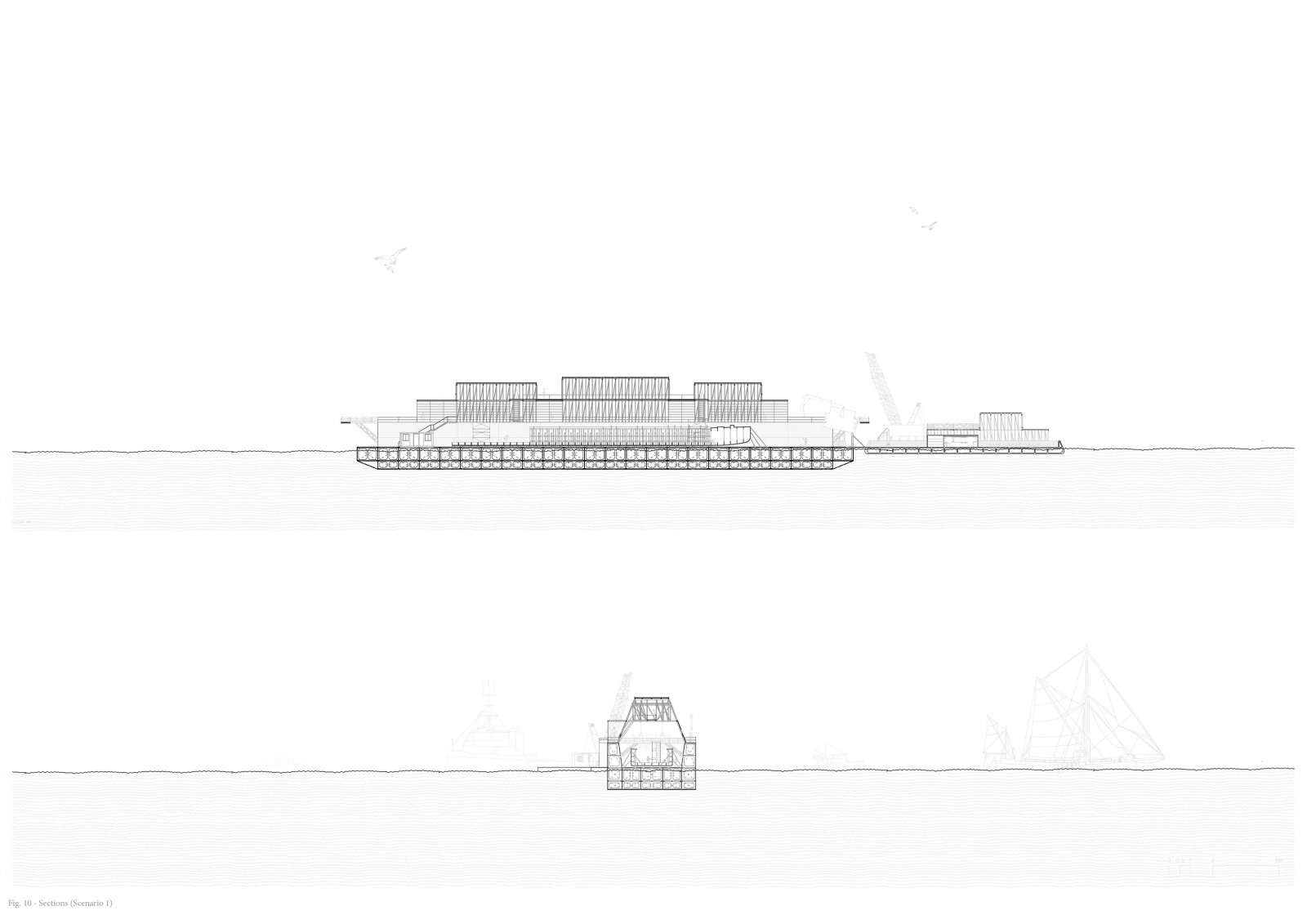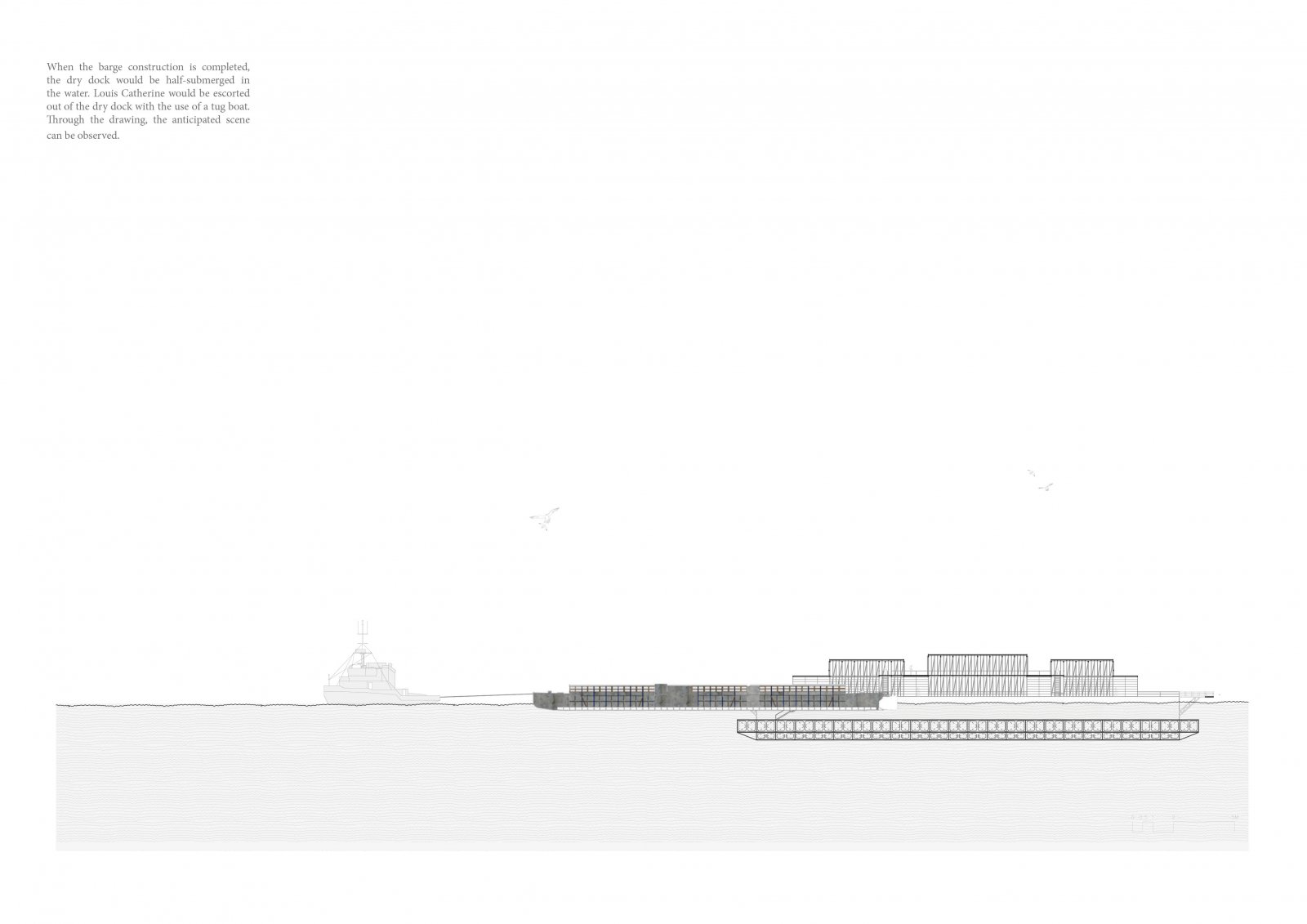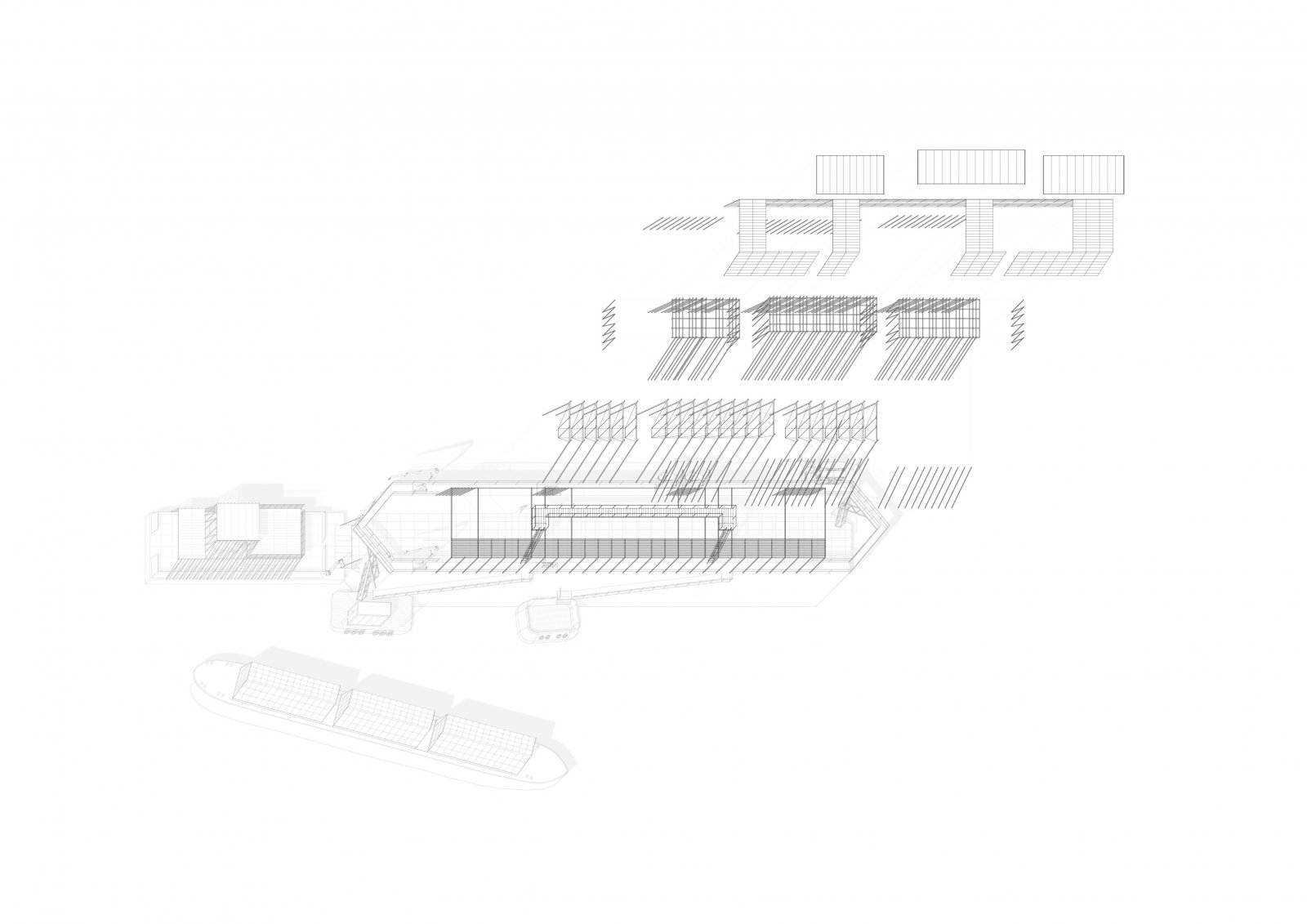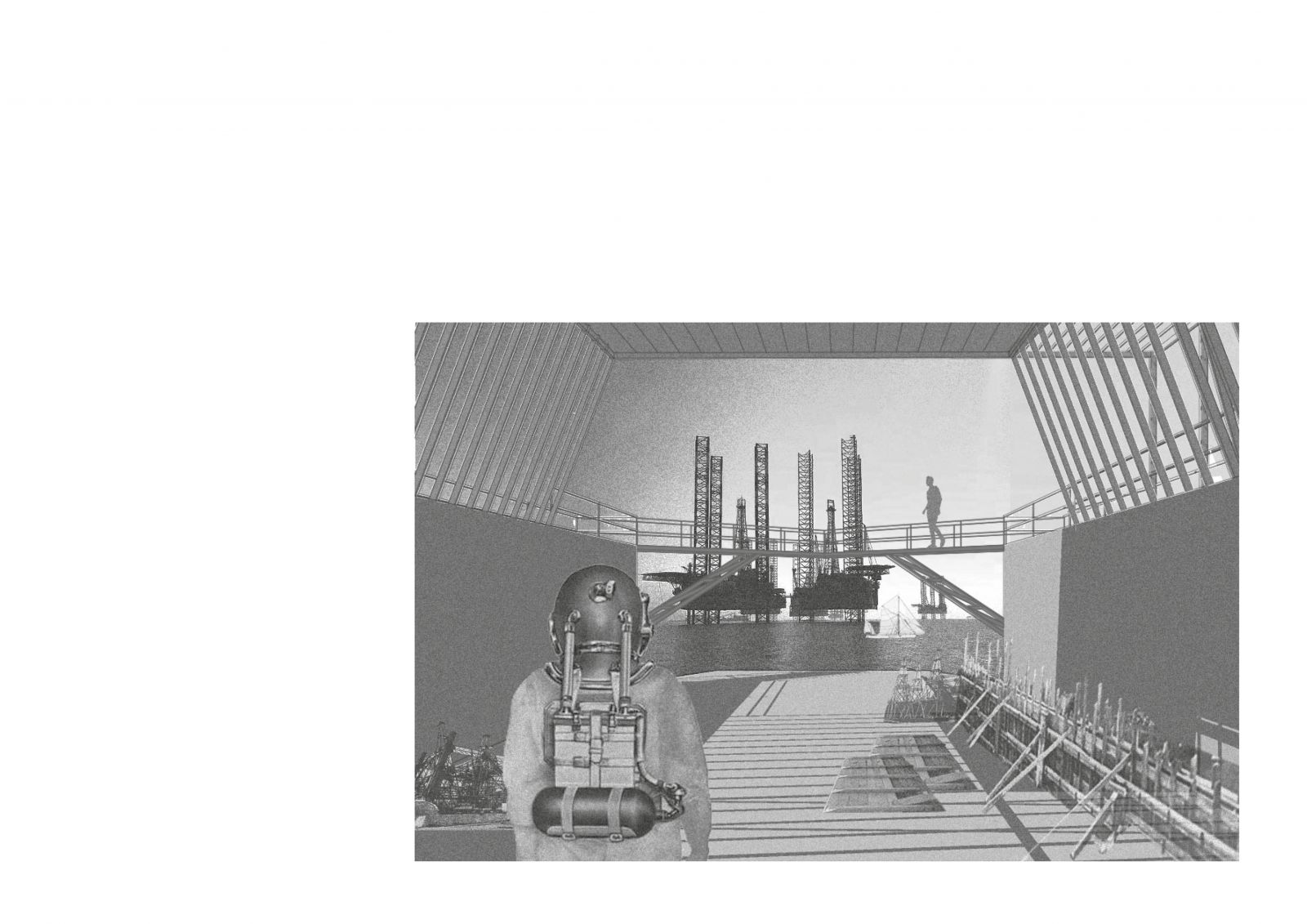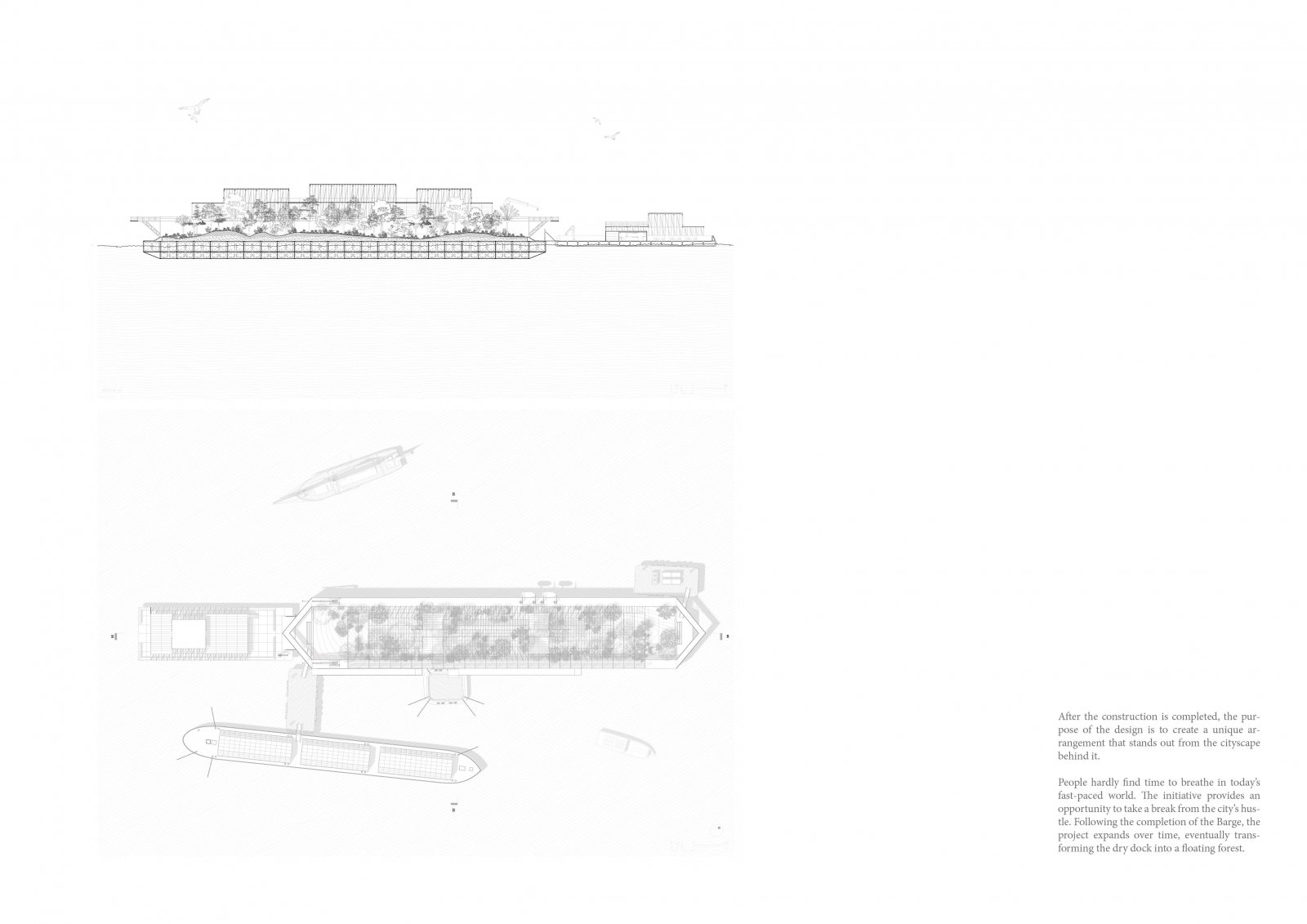Your browser is out-of-date!
For a richer surfing experience on our website, please update your browser. Update my browser now!
For a richer surfing experience on our website, please update your browser. Update my browser now!
A floating dry dock is a type of pontoon for dry docking ships, possessing floodable buoyancy chambers and a “U”-shaped cross-section. The walls are used to give the dry dock stability when the floor or deck is below the surface of the water. When valves are opened, the chambers fill with water, causing the dry dock to float lower in the water. The deck becomes submerged and this allow a ship to move inside. When the water is pumped out of the chambers, the dry dock rises and the ship is lifted out of the water on the rising deck, allowing work to proceed on the ship’s hull. When valves are opened, the chambers fill with water, causing the dry dock to float lower in the water. The deck becomes submerged and this allows a ship to be moved into position inside. When the water is pumped out of the chambers, the dry dock rises and the ship is lifted out of the water on the rising deck, allowing work to proceed on the ship’s hull. When valves are opened, the chambers fill with water, causing the dry dock to float lower in the water. The deck becomes submerged and this allows a ship to be moved into position inside. When the water is pumped out of the chambers, the dry dock rises and the ship is lifted out of the water on the rising deck, allowing work to proceed on the ship’s hull.
This is our site for rebuilding the Louise Catherine and opening up this vital space to the city of Bombay for viewing the reconstruction of one of the lesser known works of Le Corbusier.
What does it mean for the city of Bombay and how can we culturally relate to this program? Can memories of a sinking barge in Paris find refuge in the rough waters of the Arabian sea?


